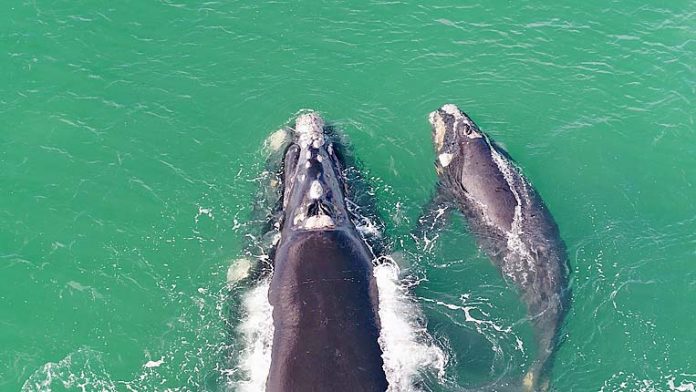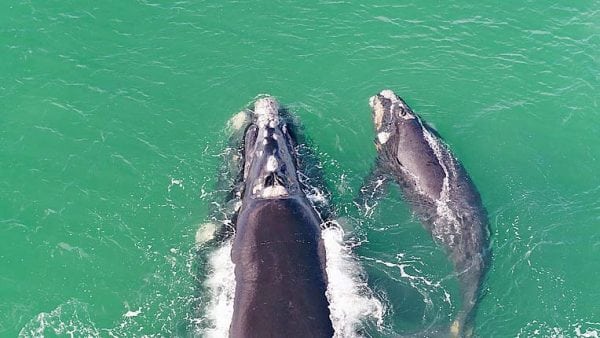

THE Glenelg Shire coastline was inundated with visits from more than 50 Southern Right and Humpback whales travelling through the Southern Ocean waters this winter.
Get the latest news to your email inbox FREE!
REGISTER

THE Glenelg Shire coastline was inundated with visits from more than 50 Southern Right and Humpback whales travelling through the Southern Ocean waters this winter.
The last four months have attracted 46 Southern Right whales and five Humpbacks with almost daily sightings at Bridgewater Bay, Portland Bay, Cape Nelson and Pivot Beach.
Whales were reported frolicking in the waters as close as 20 metres offshore at Portland’s Nuns Beach, in the heart of the town, allowing whale watchers to view from the sand as well as the clifftop above.
Bridgewater Bay Cafe owner Scott Martin said the large number of whales had been good for business, creating more turnover during what is normally a quiet season.
“We are pretty lucky here – there aren’t many cafes you can sit and have a coffee while watching not only whales, but seals and pods of dolphins on the beachfront,” he said.
“We have noticed more customers coming into the cafe when we post about the whales on social media – our Facebook page has been gaining a lot of traffic.”
Glenelg Shire Mayor Anita Rank said the high whale visitation had been exceptional for business and tourism.
“It is great to see people travelling such a long way to see the whales, it means people book accommodation, eat in cafes and restaurants, and explore more of our beautiful region,” she said.
Ms Rank said the frequent number of whales still swimming through Victorian waters was showing strong signs for the spring season.
She encouraged people to register for Whale Mail at www.whalemail.com.au to ensure they are kept up to date with all of the latest whale sightings.
Meanwhile, whale sighting off the coast at Warrnambool have created excitement with researchers from the Department of Environment, Land, Water and Planning (DELWP) studying the critically endangered Southern Right whales with the use of drones.
DELWP senior biodiversity officer Mandy Watson said the research is part of a long-term study looking at the size of the whale population in Australia’s south-east and what factors may be affecting its growth.
“By using drone technology, we’ve been able to include calves in the study for the first time,” she said.
“In the past, we haven’t been able to identify and track calves born at Logans Beach as they were too small to be photographed clearly from aircraft, which is the traditional way of collecting identification images.
“Last month we used drone photography to very quickly identify 17 individual whales, including seven calves, through high resolution images of their callosity patterns.”